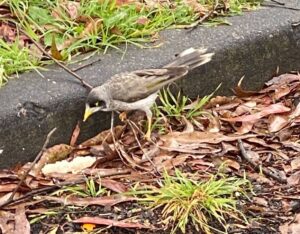There is nothing as satisfying as breeding your own birds, whether they be budgies or finches. You can also attract native birds to your garden by putting in some native plants, which provide them with food and shelter.
Breeding budgies
The Australian budgerigar is the world’s most popular pet, and therefore the world’s most popular bird as well. Don highly recommends breeding budgies as a hobby, particularly for kids. As well as being very easy and great fun, it teaches them about basic animal husbandry and introduces them to applied science.
An aviary is not the best breeding environment for budgies because they tend to fight, much like humans in an overcrowded house. Don recommended putting your breeding pairs into cabinets. These are a bit like pigeon holes, with one pair to each cabinet. A nesting box is attached to the outside of each cabinet, usually with a hinged lid to allow the owner to check its contents. Budgie cabinets with nest box cost about $60 from pet shops.
Zebra finches
Australian finch species, particularly the Zebra Finch, are almost as popular as budgies. They are hardy, easy to breed and lots of fun.
Native to most parts of grassland Australia (apart from the colder southern regions) the Zebra finch is one of the smallest of the grass finches. Ten basic colours combined with other markings and patterns can result in more than 100 variations of the Zebra Finch. White, fawn, pied, black, blue, silver, cream and cinnamon are common, with new colour variations constantly being developed.
Glossy Black-Cockatoos
The Glossy Black-Cockatoo (Calyptorhynchus lathami) is also known as the casuarina cockatoo, because it feeds on she-oak (casuarina) cones. These unobtrusive but large (46-51cm or 18-20″) blackish-brown birds are found in coastal forest and open inland woodland in eastern Australia. They breed between March and August and nest in a layer of woodchips in large tree hollows, often high off the ground. They only have one baby, which stays with the parents for several months learning from them until it is fully mature. If you want to attract these beautiful birds, follow Don’s example and plant some she-oaks (Allocasuarina torulosa) in your garden.



